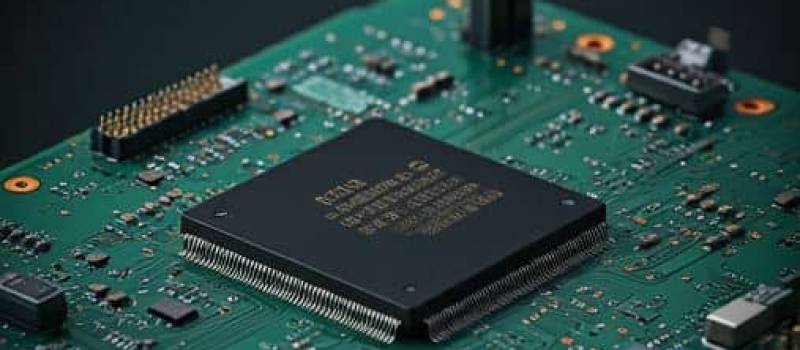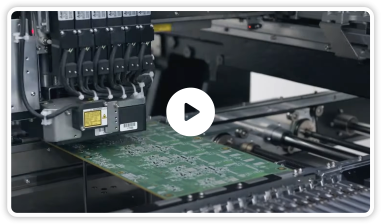Electronics industries are adopting HDI or High-Density Interconnect PCBs or Printed Circuit Boards in a big way. With electronic components becoming increasingly smaller and lightweight, circuits are offering ever-improving performance. PCB manufacturers like Rush PCB Inc. are accommodating this by packing more functionality into a smaller area, or, in other words, by offering HDI PCBs.
Why, HDI?
With semiconductor fabs reducing the size of their devices, the smaller physical distances allow faster signal rise and fall times. Therefore, these devices can perform at higher frequencies. However, the smaller devices now pack much more on the chip and this leads to higher heat generation. Manufacturers counter this by reducing the supply voltage, thereby reducing power consumption. However, this brings, in a new situation where there is a loss of signal strength, while the sensitivity of the circuits to various forms of noise, increases.
HDI technology offers a way out, with high-performing laminates being one of the solutions. Additionally, microvia fabrication through improved processes also increases the high-frequency performance of the PCB.
Compared to through-hole vias, microvias in HDI boards help in reducing parasitics by a factor of 10. Microvias also offer lower inductance, and in combination with low-inductance decoupling capacitors and via-in-pads, further reduce noise sensitivity, especially for high-speed logic.
The semiconductor industry now offers smaller gate geometries along with a larger number of total gates. This allows faster speeds with more functionality. Because they now use larger wafers, prices continue to tumble. However, this leads to IC packaging with pitch devices of 0.80 and 0.65 mm, requiring HDI technology to design the PCBs. This is because blind vias save room on inner layers, providing reduced via lands, along with via-in-pads.
HDI Benefits
HDI technologies provide greater ease of design that leads to more benefits like:
Faster Time-to-Market
HDI technologies use via-in-pads and blind vias that lead to an easier placement of components, resulting in a faster time-to-market. The smaller spacing, boulevard routing, improved BGA breakouts, and ease of auto-routing using blind/buried vias over through-hole vias provide higher design efficiencies.
The improved electrical performance from using blind vias rather than through-hole vias can further reduce overall design times. The noise reduction and improved signal integrity can mean fewer spins of the design.
Improved Reliability
The reliability of microvias has been established by extensive reliability testing. Similar testing has proven the superior reliability of small blind vias over through-hole vias. This is due to the via aspect ratio (depth to diameter ratio) being as high as 20:1, mainly due to the thin materials and low Z-axis TCE materials that HDI technology uses.
The IPC-4101B standard covers the numerous HDI materials in use, and these exceed multilayer laminates in variety. Moreover, thin HDI materials are well-suited for thermal heat transfers.
Lower Cost
The improved design process for HDI PCBs, if properly planned and executed, can produce HDI multilayer boards that are less expensive compared to their through-hole alternatives. For instance, using HDI technology, designers created an 8-layer HDI multilayer board to replace a 14-layer through-hole multilayer board. Furthermore, by making full use of the secondary side of the board, in addition to reducing the number of layers by 6, they could connect all components using 40% less area.
A great many electronic equipment we use today are built with HDI technology. The majority among them are those with a substantial decrease in size and weight. This is due to the exclusive use of HDI technology to reduce the form factor of the equipment.
We manufacture HDI boards with tight tolerances. Even a small layout mishap or defect can cause significant problems. As a leading HDI PCB supplier, we deliver top-quality boards with a significantly higher circuit density as compared to a traditional PCBs.
HDI PCBs
HDI or high-density interconnect PCBs typically exhibit dense placement of components along with denser interconnections. In comparison to a traditional PCB, HDI PCBs offer higher wiring density per unit area, because they contain:
- Laser-drilled microvias
- Blind and buried vias
- Coreless construction with pairs of layers
- Alternative coreless construction with layer pairs
- Passive substrate construction without electrical connections
- A higher number of interconnects
The above features allow HDI boards to achieve smaller dimensions and compactness. They also feature higher densities because of smaller pads, traces, spaces, and vias. The smaller features allow HDI boards to have high wiring density, making them miniature, lightweight circuits with fewer number of layers. In fact, a single HDI board can effectively replace several regular PCBs.
The IPC 2226 standard defines HDI boards as having the following features:
- Traces and spaces < 100 µm width
- Small vias < 150 µm diameter
- Capture pads < 400 µm diameter
- Pad density > 20 pads/cm2
The standard defines three types of HDI boards:
- Type 1: Has a single microvia layer on at least one of the sides of the core. Plated microvia technology and PTH establish the interconnections. Although there are no buried vias in the PCB, it may contain blind vias.
- Type 2: Has a single microvia layer on at least one of the sides of the core. Plated microvia technology and PTH establish the interconnections. Both buried and blind vias are present in the PCB.
- Type 3: The PCB has at least two layers of microvias on one or both sides of the core. Plated microvia technology and PTH establish the interconnections. Both buried and blind vias are present in the PCB.

HDI PCB Design Considerations
The HDI production process is somewhat different from that of regular PCBs. We know and address the following considerations throughout the fabrication process:
Sequential Lamination
The lamination process of the HDI PCB uses the PCB core or cores in combination with copper, including pre-preg layers in the case of multilayer PCBs, and forms them by applying heat and pressure, which may vary with different boards. After completing the lamination phase, vias are drilled. Unlike regular boards, this process may repeat many times for HDI boards. This sequential lamination process helps prevent any shifts and breakages during drilling.
Via-in-Pad
The via-in-pads process allows placing vias within the flat lands on the PCB. After creating the vias, they are plated and filled with a specific via fill type, capped, and finally plated to cover them. The process for creating a via-in-pad typically has 10–12 steps, requiring specialized equipment and skilled technicians. Creating via-in-pad in HDI PCBs is critical as it reduces space requirements, improves thermal management, and provides one of the best ways of introducing high-density wiring.
Via Fill Types
We use via fill types that match specific applications and requirements. We work with via fill materials that include silver, copper, conductive epoxy, and non-conductive epoxy. Among the above, the non-conductive epoxy is the most common type. We offer via fills that remain flush with the copper and solder entirely. Fills allow standard vias and microvias to be blind or buried, and then drilled and plated to hide beneath the SMT land. We often conduct multiple drill cycles at precision control depths to ensure the drilling process is up to the desired depth each time. For this level of control, we use specialized equipment and the lead time is also more.
HDI Structure
We produce HDI PCBs in various layout options. Most commonly, we use the 1-n-1 and the 2-n-2 types. A 1-n-1 is the simplest form of HDI PCB with a single build-up of HDI layers. It has one sequential lamination on each side of the core. The 2-n-2 has two HDI layers, where it is possible to stack or stagger microvias across them. For complex designs, we typically use stacked copper-filled microvia structures. Although we can build stacked microvias to a high level in X-n-X layouts, the complexity increases and the costs can be high.
We also make any-layer HDI. This is an extremely dense HDI layout, with conductors on any layer of the PCB interconnecting freely with laser microvia structures. We make such designs, typically for CPU and GPU chips in mobiles and smartphones.
Laser-Drill Technology
For complex any-layer HDI designs, we must use laser-drilled microvias. These lasers can drill up to about 20 microns in diameter and can cut through glass and metal effortlessly. Although they create very tiny holes, they are very clean, without burrs and debris.
Contact Imaging and LDI
As a leading HDI PCB manufacturer, we always push the envelope in our processes. We use clean rooms and cutting-edge technology to generate the fine lines in our HDI boards, always ensuring safety and secure processing. As repairs are not possible for such fine details, we must ensure that we do it right the first time and with extreme precision. For this, we typically use contact imaging and LDI as necessary for the application. Our preference is for LDI as it can handle fine lines and minute spaces even for the most demanding processes, allowing us to continually expand our capabilities to include even the smallest form factors.
Conclusion
At Rush PCB Inc., we have been supplying High-Density Interconnect printed circuit boards for over two decades, and for us, no tolerance is too tight, nor any order is too small. We offer our customers a win-win option with our competitive pricing, quick response times and quotes, and domestic manufacturing along with an unprecedented level of flexibility.









